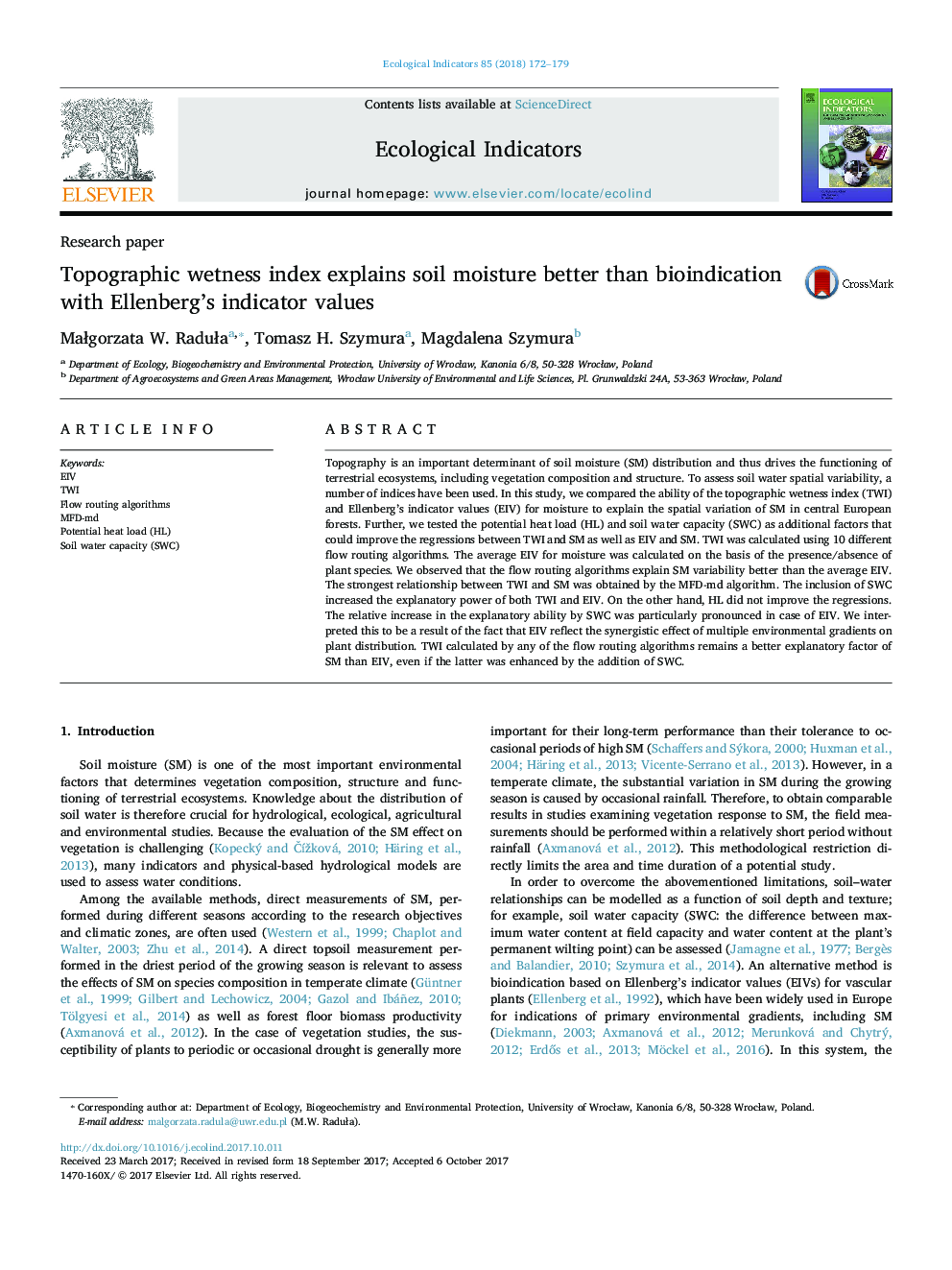| Article ID | Journal | Published Year | Pages | File Type |
|---|---|---|---|---|
| 8845661 | Ecological Indicators | 2018 | 8 Pages |
Abstract
Topography is an important determinant of soil moisture (SM) distribution and thus drives the functioning of terrestrial ecosystems, including vegetation composition and structure. To assess soil water spatial variability, a number of indices have been used. In this study, we compared the ability of the topographic wetness index (TWI) and Ellenberg's indicator values (EIV) for moisture to explain the spatial variation of SM in central European forests. Further, we tested the potential heat load (HL) and soil water capacity (SWC) as additional factors that could improve the regressions between TWI and SM as well as EIV and SM. TWI was calculated using 10 different flow routing algorithms. The average EIV for moisture was calculated on the basis of the presence/absence of plant species. We observed that the flow routing algorithms explain SM variability better than the average EIV. The strongest relationship between TWI and SM was obtained by the MFD-md algorithm. The inclusion of SWC increased the explanatory power of both TWI and EIV. On the other hand, HL did not improve the regressions. The relative increase in the explanatory ability by SWC was particularly pronounced in case of EIV. We interpreted this to be a result of the fact that EIV reflect the synergistic effect of multiple environmental gradients on plant distribution. TWI calculated by any of the flow routing algorithms remains a better explanatory factor of SM than EIV, even if the latter was enhanced by the addition of SWC.
Related Topics
Life Sciences
Agricultural and Biological Sciences
Ecology, Evolution, Behavior and Systematics
Authors
MaÅgorzata W. RaduÅa, Tomasz H. Szymura, Magdalena Szymura,
